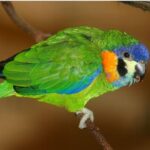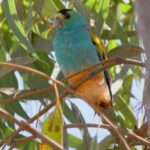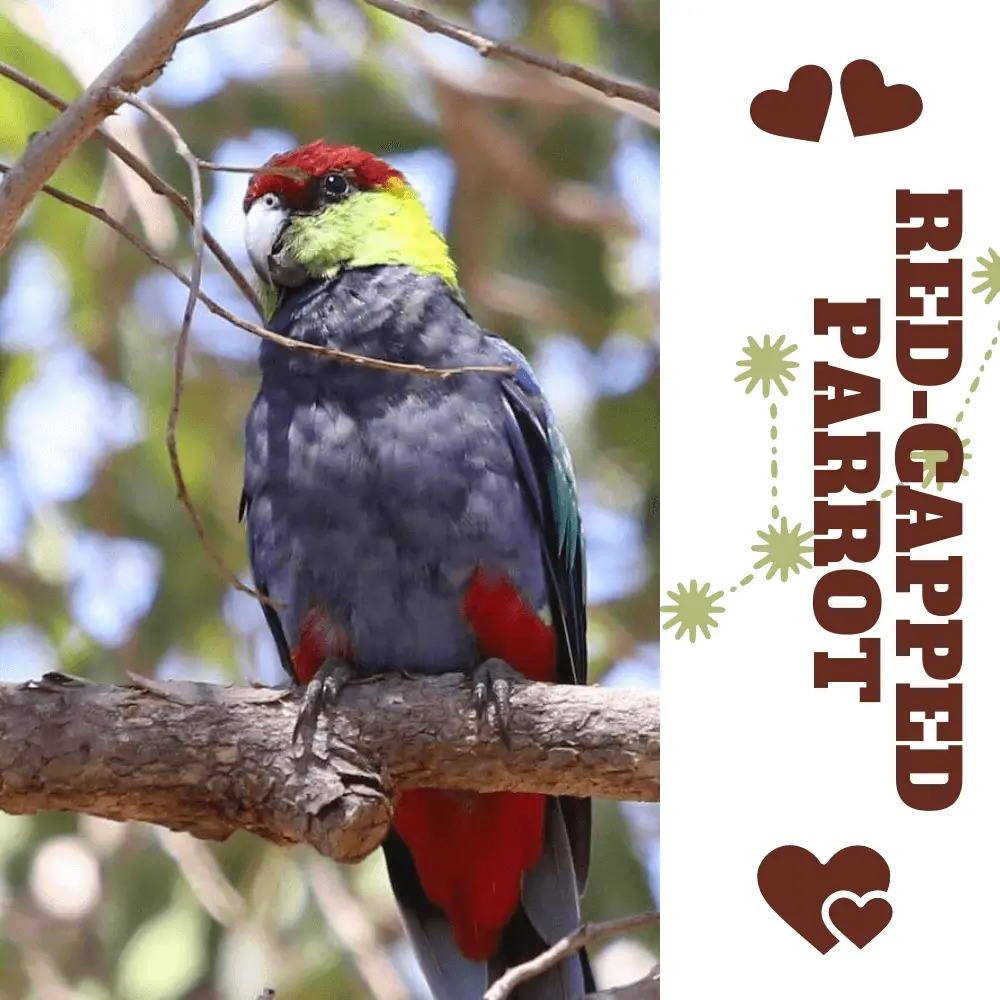
Red-capped Parrot 36 cm; 98–156 g. Entire crown crimson, face, and ear-coverts yellowish green; underparts purple, with flanks, thighs, and under tail-coverts red;
nape, mantle, and wing-coverts green, flight-feathers dark, with underwing-coverts and outer webs of primaries dull blue; rump and upper tail-coverts yellowish green; tail green, distally darker, lateral feathers pale blue tipped whitish.
Red-capped Parrot Female duller, with wing stripe on underwing; flanks and under tail-coverts with green. Immature has a green head, dull russet breast, and belly.
Systematics History
Monotypic.
Subspecies
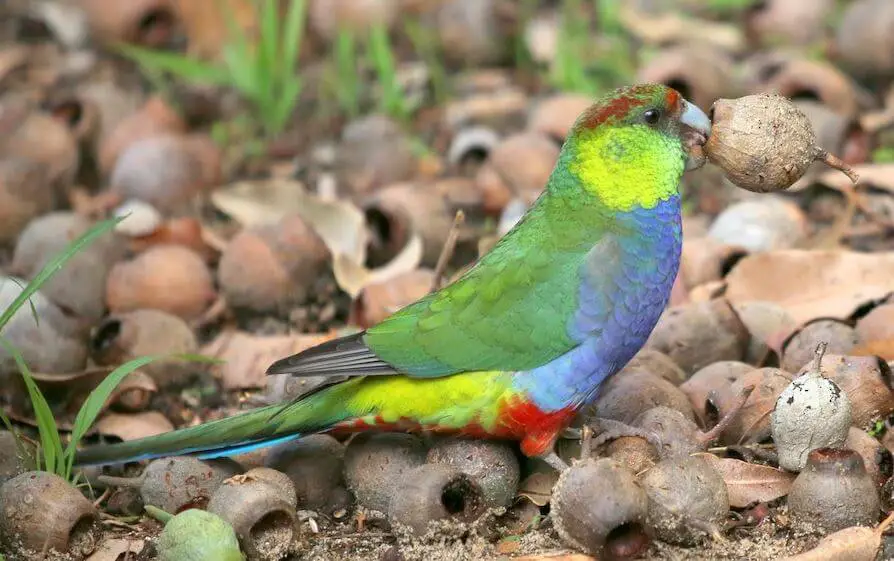
Monotypic.
Distribution
Extreme SW Australia, mostly within 100 km of coast.
Habitat
Marri Eucalyptus calophylla forest and trees in pristine and altered landscapes including farmland, roadsides, and watercourses, also visiting parkland and orchards.
Movement
Adults are mainly sedentary but fluctuations in local numbers of immature occur according to food availability; also nomadism at dry edges of the range.
Diet and Foraging
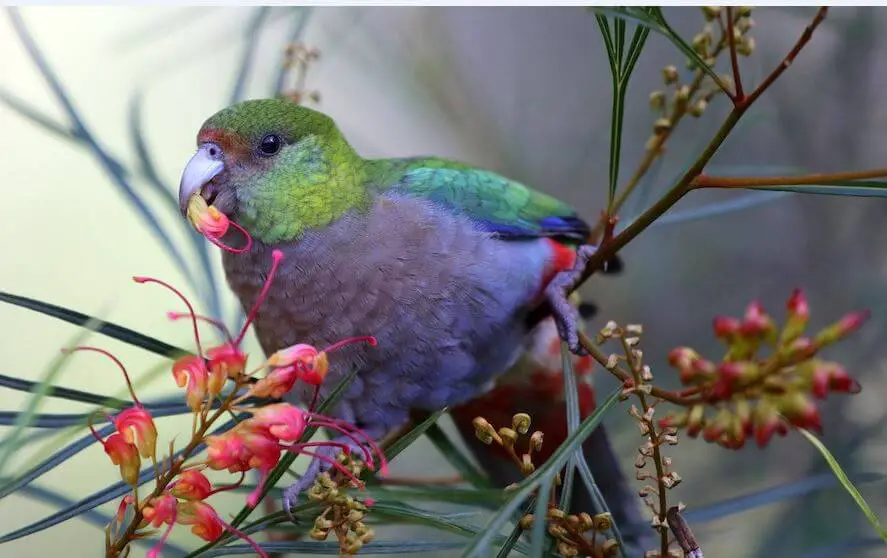
Red-capped Parrot Seeds of marri and other eucalypts, notably Jarra E. marginata and E. cornuta, also those of Grevillea, Hakea, Casuarina, Xylomelum, Agonis, and grasses,
especially Avena fatua; plus blossoms (several eucalypts), leaf buds and insects and their larvae, in particular psyllid lerps. Sometimes damages apples, pears, and citrus fruits.
SOURCE: muja28
Sounds and Vocal Behavior
Red-capped Parrot call a harsh and hoarse, short “kcheh”, typically repeated in loose series. Also a three-note nasal “ke-ke-keh”, and several short squeaky notes when perched.
Breeding
Aug–Dec. Red-capped Parrot Nest in a hollow limb or hole in the tree, commonly high in Jarra, marri, or wandoo (E. wandoo). Eggs 4–7; incubation lasts c. 20 days; nestling period c. 5 weeks.
Conservation Status
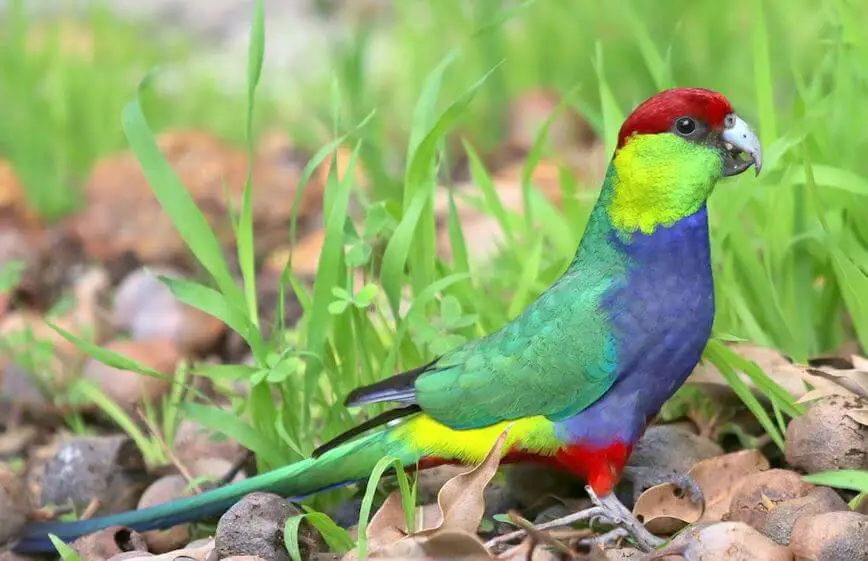
Not globally threatened. CITES II. Fairly common, sometimes entering suburbs of Perth. While marri, regarded as a weed species, may actually have spread following the human occupation of SW Australia, thus benefiting Red-capped Parrot,
poor regeneration of nest trees is a long-term cause for concern, and the restricted range of the specific compounds the situation. In two shires of Western Australia, there are open seasons when birds may be killed to reduce orchard damage.

